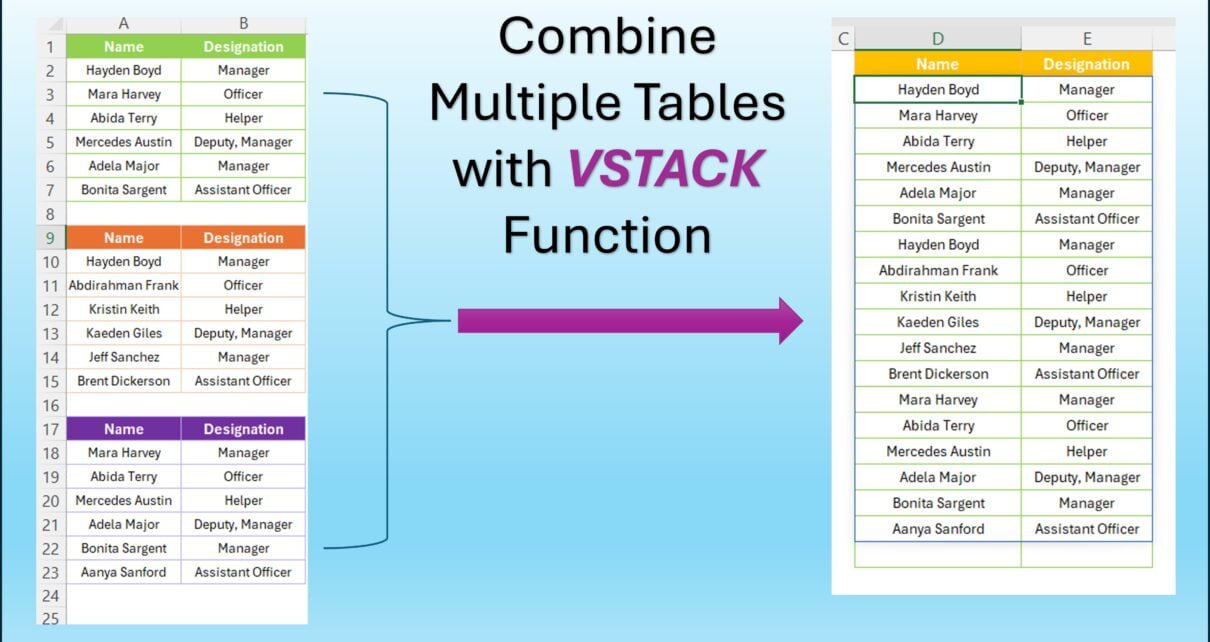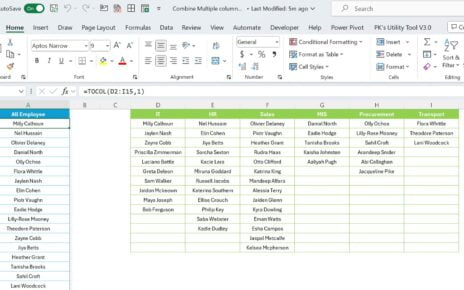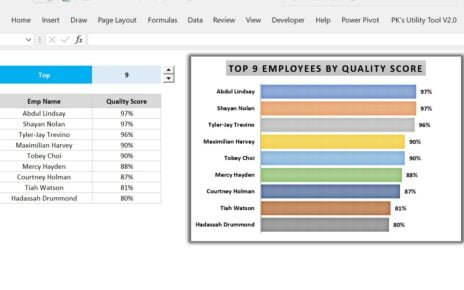Have you ever had multiple tables in Excel that you needed to combine into one? If so, you’re in the right place! In this post, we’re going to walk you through a super handy function called Combine Multiple Tables with VSTACK Function. Whether you’re managing data for a project or just organizing information, this tutorial will help you streamline your workflow. So, let’s dive in!
What is the VSTACK Function?
Before we jump into the step-by-step process, let’s take a moment to understand what the VSTACK function actually does. Simply put, VSTACK is a function in Excel that allows you to stack multiple arrays (or tables) on top of each other vertically. This means you can take different sets of data and merge them into a single, cohesive table. Pretty neat, right?
The Data We’re Working With
To make things clear, let’s start by looking at the data we’ll be working with. In this example, we have three different tables, each containing a list of employees and their designations. Here’s what our data looks like:
Table 1: (Available on range A1)
Table 2: (Available on range A10)
Table 3: (Available on range A18)
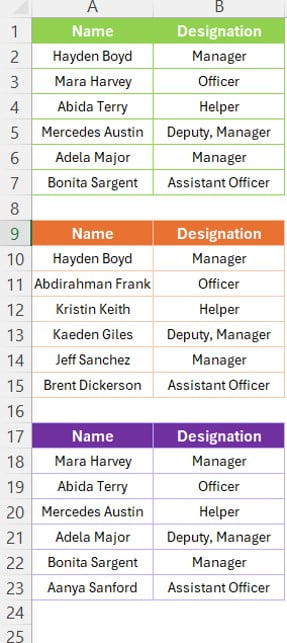
Now, the task at hand is to combine these three tables into one. This is where the VSTACK function comes into play.
Combining Tables Using the VSTACK Function
Now that we’ve set the stage, let’s get into the action! Here’s how you can use the VSTACK function to combine the tables:
Step 1: Enter the VSTACK Function
First, select the cell where you want the combined table to begin. Let’s say we want to start in cell D2. In this cell, you’ll enter the following formula:
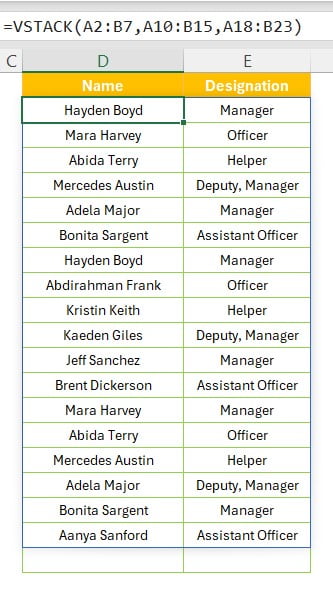
=VSTACK(A2:B7, A10:B15, A18:B23)
Step 2: Understanding the Formula
Let’s break down what this formula does. The VSTACK function takes multiple ranges (in this case, A2, A10, And A18)
and stacks them on top of each other. The result is a single, combined table that includes all the data from the three individual tables.
Step 3: Check the Output
Once you press Enter, Excel will immediately generate the combined table. Here’s what the output looks like:
Voilà! All the data from the three tables has been combined into one, making it easier to analyses or further process.
Why Use VSTACK?
You might be wondering, “Why should I use VSTACK instead of just copying and pasting the tables together?” Well, there are several reasons:
- Efficiency: VSTACK saves time, especially when dealing with large datasets.
- Dynamic Updates: If any of the original tables change, your combined table will update automatically.
- Simplicity: It reduces the risk of errors that can occur with manual copying and pasting.
Final Thoughts:
And there you have it! With the VSTACK function, combining multiple tables in Excel is as easy as pie. This function is not just powerful but also incredibly user-friendly, making it a great tool for anyone who works with data in Excel.
So, next time you’re faced with the task of merging tables, give VSTACK a try. You’ll wonder how you ever managed without it!
Feel free to experiment with this function and see how it can make your Excel tasks more efficient. Happy stacking!
Visit our YouTube channel to learn step-by-step video tutorials
View this post on Instagram
